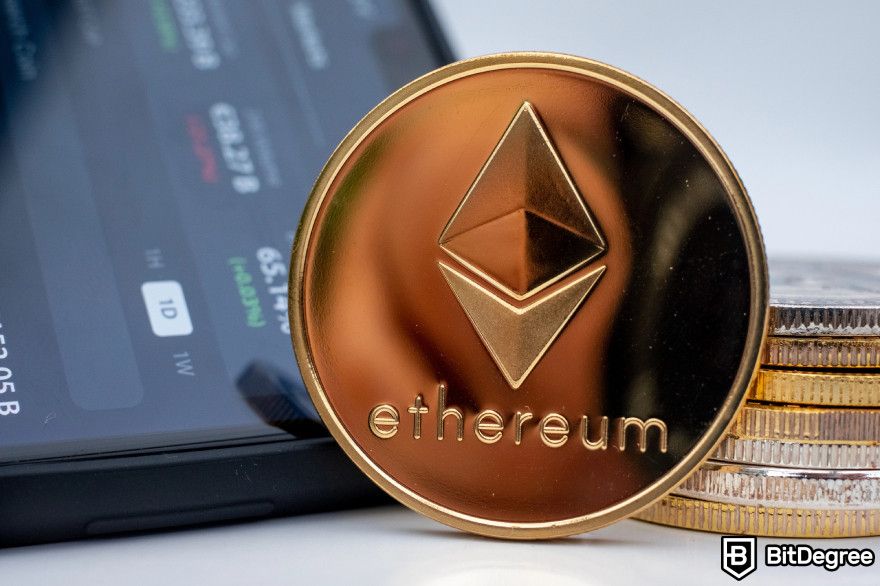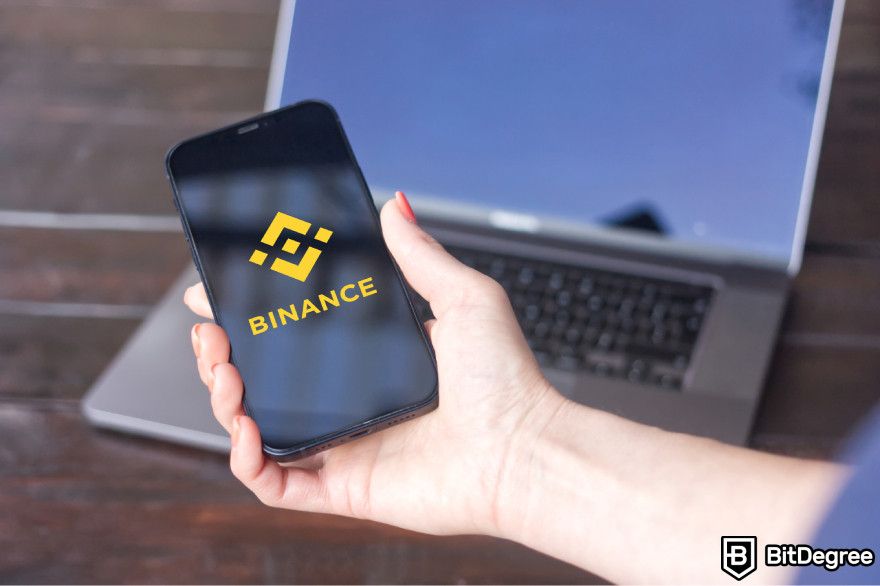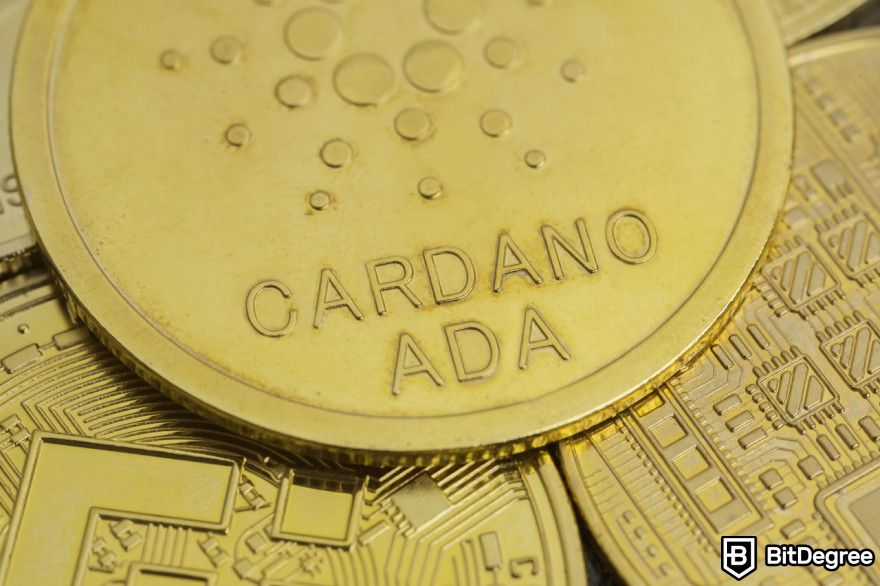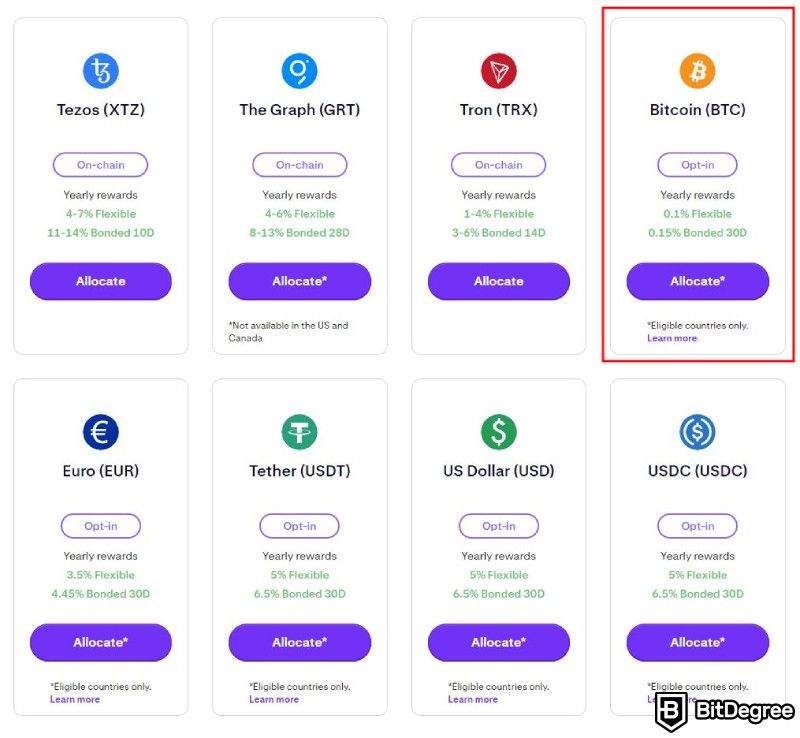Key Takeaways
- Bitcoin staking isn't possible because it uses a Proof of Work consensus mechanism, which relies on mining rather than staking;
- To stake a cryptocurrency, you need to choose coins that use PoS mechanisms, like Ethereum, Cardano, or Solana;
- There are alternatives to generate income from Bitcoin, like HODLing, trading, and lending.
Stop overpaying - start transferring money with Ogvio. Sign up, invite friends & grab Rewards now! 🎁
If you’re new to crypto, you might be surprised that Bitcoin staking isn't possible. This can be a letdown since staking is a popular way to earn passive income while helping secure a blockchain network.
Simply put, Bitcoin uses a technology different from other cryptocurrencies like Ethereum, which can be staked through popular platforms like Binance or Bybit. While missing out on staking the most popular cryptocurrency might be a bummer, alternatives are available.
So, ditch the disappointment, and let’s explore new ways to potentially earn on your Bitcoin assets!

Did you know?
Subscribe - We publish new crypto explainer videos every week!
What is Web3? (Animated Explanation + Examples)


Table of Contents
- 1. Why Bitcoin Staking is Not Possible?
- 1.1. What is Staking?
- 1.2. Mining VS Staking
- 1.3. Will You Be Able to Stake Bitcoin in the Future?
- 2. Exploring Alternatives to Staking Bitcoin
- 2.1. Staking Other Cryptocurrencies
- 2.2. Alternatives Ways to Earn from Bitcoin
- 3. Bitcoin Investment Risks and Best Practices
- 3.1. Bitcoin Investment Risks
- 3.2. Bitcoin Investment Best Practices
- 4. Conclusions
Why Bitcoin Staking is Not Possible?
You may have heard the term "Bitcoin staking" mentioned, sparking curiosity about its potential for generating income with the leading cryptocurrency. However, staking Bitcoin isn't currently possible.
Latest Deal Active Right Now:Why is that so? The reason boils down to the underlying technology. Unlike cryptocurrencies that allow staking, Bitcoin uses a different system called Proof-of-Work (PoW). But before we get into the details, let's explore the concept of staking in more detail.
What is Staking?
Staking allows you to earn passive income on your cryptocurrency holdings. In Proof-of-Stake (PoS) blockchains, users can stake their tokens to support network operations. In return, they receive rewards, typically in the form of new tokens.
PoS blockchains rely on these “stakers” chosen based on the amount of crypto they’ve staked. The more tokens you stake, the higher your chance of being selected to validate transactions and earn rewards. This process helps secure the network by incentivizing users to hold onto their tokens[1].
You can imagine stakers as trusted contributors to the security of the network. They show their commitment by pledging their cryptocurrency for a set period.
It's important to note that staking is only available for cryptocurrencies that use a PoS consensus mechanism. In contrast, Bitcoin utilizes a PoW mechanism, which doesn't support staking protocol. So, if someone asks, “Can you stake Bitcoin?” the answer is, unfortunately, no.
Mining VS Staking
Bitcoin's PoW mechanism involves a process called mining. In this process, "miners" use their computers to validate and verify transactions on the blockchain network by solving complex mathematical problems. This process requires a significant amount of computational power and energy consumption.
The first miner to crack the code wins a reward in the form of newly minted coins and transaction fees. This reward system incentivizes miners to participate and keeps the network secure.
Miners with more powerful computers are more likely to solve the puzzle first and take the reward. This system naturally pushes them to invest in better computers to stay competitive.

As more Bitcoin gets mined, the difficulty of these puzzles automatically adjusts. This protocol keeps things fair for everyone, but it also makes it progressively more challenging for any single miner to win the reward[2].
Unlike mining Bitcoin, staking in PoS blockchains offers an easier way for users to contribute to network security. You don’t need expensive mining rigs and complex technical knowledge. In PoS, you can delegate some of your tokens on an exchange or wallet that supports staking to become a validator and earn rewards.
This concept might be similar to earning interest on your savings account in a traditional bank. Typically, banks use your deposited money to lend to others and pay you a portion of the interest earned. However, there are no loans involved, though some additional fees might be involved.
Both mechanisms secure blockchain networks, but in totally different ways. While it requires substantial resources to mine Bitcoin, staking presents a more accessible option for users to participate and earn passive income.
Will You Be Able to Stake Bitcoin in the Future?
We've explored earlier that Bitcoin staking isn’t possible because the network design doesn’t support it. However, the possibility of staking the king of cryptos continues to captivate the community. Several projects are trying to make Bitcoin staking a reality in the future.
For example, this intriguing concept has caught the attention of David Tse and his team at Babylon Chain from Stanford University. They’re exploring the idea to stake Bitcoin using their network by leveraging Bitcoin's timestamping protocol.
In essence, the project envisions a future where Bitcoin holders can stake their BTC on PoS blockchains without needing third-party custodians, bridges, or wrapped tokens. Additionally, the team wants to provide "slashable economic security guarantees" to ensure the protocol remains secure and efficient.
Although it sounds impossible, Babylon claims to have developed a specific cryptographic scheme that addresses the main security concerns. This scheme creates a low-risk environment, compelling participants to join the staking process.
While undeniably intriguing, some people still doubt the feasibility of the project, which, as of writing, remains in its early stages and still gathering feedback from users. It seems they need more time before deciding on Bitcoin staking rates and becoming the go-to place where to stake Bitcoin.

Another project attempting to make Bitcoin staking possible is Stroom. This network aims to be a Bitcoin liquid staking protocol, enabling users to earn native BTC yield on the Lightning Network (LN).
Stroom plans to bridge the Bitcoin LN with EVM-compatible blockchains like Ethereum. This method would allow users to conduct Bitcoin staking and earn yield through the network without locking up their BTC or managing node infrastructure.
As of writing, this project is also in its early stages of development. Stroom is still seeking experts to oversee network management and security.
They also plan to expand participation to a broader network of channel operators. However, specific dates haven't been announced yet, so it will take some time to answer the question, “Can you stake Bitcoin through LN?”.
While it may not be possible to stake Bitcoin yet, projects like Stroom demonstrate the dynamic nature of the crypto world. It's a space brimming with innovation, constantly pushing boundaries and seeking disruptive solutions.
Exploring Alternatives to Staking Bitcoin
Alright, we've established that Bitcoin staking isn't possible due to its different security methods. So, what should you do if you want to earn from cryptocurrencies? Don't worry; there are other options!
Staking Other Cryptocurrencies
Though you can't stake Bitcoin, many other cryptocurrencies support the PoS mechanism and offer staking opportunities. These options let you earn rewards while supporting network security. Here are a few popular choices that might pique your interest:
Ethereum (ETH)
Sometimes called "digital silver," Ethereum is the second-biggest cryptocurrency after Bitcoin (as of writing). Even though initially it was also PoW-based, staking Ethereum has been possible for quite some time now and has gotten better through a series of successful upgrades since the Merge.
Ethereum's popularity stems from its robust security and ability to run smart contracts, a self-executing program that automatically executes agreements. This technology has transformed Ethereum into a hub for innovation, attracting developers to create various decentralized applications (dApps).
With most dApps and various projects still being built on Ethereum, new developers have a great reason to join because of the lively community on this blockchain. From a user’s perspective, Ethereum dApps usually have big, active communities, unlike the same dApp on a different blockchain.

As a result, Ethereum has gathered a huge and devoted user base over time. Both developers and end-users participate in projects on this blockchain.
As more people started using the network, it just continued to grow. With the popularity of decentralized finance (DeFi) and non-fungible tokens (NFTs), even more users are getting involved and helping the network continue to expand.
Apart from the traditional staking, you can also liquid stake Ethereum, which to receive unique tokens in return for your staked assets. These tokens serve as stand-ins for your staked ETH and can be traded on crypto exchanges and used in various DeFi activities.
You can stake ETH on various staking protocols or reputable crypto exchanges like Binance, Bybit, and Kraken.
Binance Coin (BNB)
BNB, the native coin of one of the leading cryptocurrency exchanges, is a favorite among crypto enthusiasts due to its wide range of uses.
You can use BNB to get discounts on trading fees when using the Binance centralized crypto exchange. Binance has also made BNB even more useful by including it in different parts of its ecosystem, such as Binance DEX and Binance Launchpad. You can also use BNB to buy stuff from specific merchants and even stake it.

By staking BNB, you're helping to secure and validate transactions within its ecosystem. To get started, simply select a validator and delegate your BNB to them. In return, you'll receive extra tokens as rewards.
With its strong tokenomics, BNB is surely an appealing alternative to Bitcoin staking. You can stake BNB on Binance using the BNB Vault.
Solana (SOL)
Solana is another good alternative after you find Bitcoin staking isn't possible. This blockchain network is known for its super-fast transaction speeds and low-cost transaction fees. Many users believe it's a strong candidate for widespread use in the future.
Because of the Solana smart contract capability, developers can use it to build dApps. Its rapid growth has helped establish it as a rival to other major programmable blockchains, such as Ethereum. Plus, it's creating a big ecosystem of different projects and might become a popular choice for merchants with Solana Pay.
Since Solana is a PoS blockchain, you have the opportunity to stake your crypto and earn rewards. By pledging your SOL tokens to a validator node that checks transactions, you'll receive a portion of the block rewards.
If you want to stake Solana, you can check out Binance or Kraken.
Cardano (ADA)
Cardano is also a popular blockchain that could be your alternative to Bitcoin staking. Often compared to Ethereum, Cardano has fast transaction speeds achieved through a unique system called Ouroboros PoS. Unlike some other methods, Cardano claims that Ouroboros is more energy-efficient.
Its native currency, ADA, goes beyond just staking. It's also a governance token, empowering holders with voting rights to shape Cardano's future through key decisions. Additionally, ADA acts as the transaction currency on the network’s main layer, allowing users to pay merchants who accept cryptocurrency. Learn more about Cardano staking here.

These are just a few examples, and there are many other exciting PoS blockchains, each with its own unique features and staking mechanisms. Until Bitcoin staking becomes a reality, you can consider these coins as your gateway to the crypto staking space.
Getting started with staking is easy and accessible, thanks to various user-friendly exchanges and wallets. While the exact steps can vary depending on the platform and cryptocurrency, the general process typically follows these steps:
Step 1: Pick a cryptocurrency that supports staking.
Step 2: Choose a reliable and user-friendly wallet and a staking platform that allows staking for your chosen cryptocurrency. For an extra layer of security, consider hardware wallets like Ledger Nano X or Ledger Nano S Plus.
Step 3: Transfer a certain amount of coins to your staking wallet.
Step 4: For some PoS blockchains, you must choose a validator to delegate your staked coins.
Step 5: You'll automatically earn rewards once you've staked your crypto.
Keep in mind that staking rewards aren't similar. Different platforms offer varying yields, depending on the amount of coins you stake and the duration. Staking rates can range from 1% to 20%, depending on the platform and the specific coin.
While they're not Bitcoin, staking rates might entice you to start delegating and earning from these PoS-based coins. In addition to attractive yield rates, these networks offer various features and an exciting ecosystem that could pique your interest and make you want to explore more.

Did you know?
Subscribe - We publish new crypto explainer videos every week!
Harmony ONE Explained (Beginner-Friendly Animation)


Alternatives Ways to Earn from Bitcoin
If you're not interested in staking other coins and want to stick with the number one cryptocurrency, don't worry—there are options. Even though staking Bitcoin itself isn't a thing yet, there are ways to make your digital gold grow. Here are a few alternatives to consider.
HODLing
For beginners new to Bitcoin, HODLing (a playful twist from "holding") is a popular strategy. It involves buying Bitcoin and holding onto it for the long term.
The core belief behind HODLing is that Bitcoin's value will increase significantly over time, leading to potential future profits. But, this approach requires both patience and a strong conviction in this digital gold's long-term viability.

Like any investment, holding onto Bitcoin for an extended period means you'll likely experience price fluctuations. So, if you choose this method, be prepared for these market swings and avoid making hasty decisions based on short-term changes.
To HODL effectively, you need to store your Bitcoin in a secure wallet, preferably a cold one like Ledger Nano X or Trezor Safe 5, and resist the urge to sell during price dips. Holding onto your Bitcoin as the market matures could potentially reap substantial rewards.
Trading
Another alternative to stake Bitcoin is trading. Trading involves buying and selling Bitcoin to profit from its price fluctuations. It allows you to capitalize on market movements and potentially increase your holdings.
When you trade, you make more frequent transactions compared to just holding onto your Bitcoin. You aim to buy at a lower price and sell at a higher price within a short period of time to make a profit.
While HODL investors are patient with their investments, traders aim to make profits within a specific time frame. Traders also use tools and indicators like moving averages and stochastic oscillators to find good trading opportunities.
However, be careful if you decide to trade, especially day trading. The promise of quick and easy profits can be powerful and might influence your judgment. It's not for the faint of heart, as it requires making minute-to-minute decisions.

Managing your emotions while making investment choices in this environment can be tough and could lead to costly mistakes.
On top of that, the crypto market is relatively young, which makes it unpredictable compared to traditional stock markets with decades of historical data. Even experienced day traders, armed with extensive market knowledge, often struggle to consistently outperform simple buy-and-hold strategies in the long run.
For many investors seeking a calmer approach, HODLing Bitcoin presents a more straightforward and potentially less stressful strategy. It sidesteps the complexities and constant monitoring required for day trading, allowing you to focus on Bitcoin's long-term growth potential.
But, if you thrive in a high-risk environment and have the necessary skill set, Bitcoin trading could be rewarding.
Lending
Bitcoin lending offers a fresh take on a familiar concept: loaning your BTC to others in exchange for interest. Similar to traditional bank loans, crypto lending platforms facilitate these transactions.
To participate, you need to deposit your cryptocurrency onto a lending platform. These platforms then connect you with borrowers who need to use your Bitcoin. As long as your crypto remains on the platform, you'll earn interest from the borrowers.

This method can be an appealing option for those looking to earn interest on their Bitcoin holdings. Nowadays, many platforms allow you to connect with borrowers and lend your Bitcoin for interest directly. Keep in mind, though, that interest rates and terms vary depending on the platform.
However, it's crucial to understand the risks involved. Borrowers may default on their loans, and you can potentially lose some or all of your Bitcoin. Additionally, the crypto lending industry is still young and evolving, introducing regulatory uncertainty.
Opt-In Staking
Even though I said staking Bitcoin isn't possible, there’s a somewhat similar alternative called opt-in "staking" offered by Kraken. By taking part, you can potentially earn rewards just by holding eligible Bitcoin in your Kraken account.
Unlike traditional staking, you're not required to lock up your assets in an on-chain service. This means that your Bitcoin remains fully accessible while still generating rewards.
The process is also pretty easy. Once you activate the feature, you can start earning rewards almost immediately, with payouts typically distributed twice a week.
As of writing, there are no fees associated with participating in opt-in Bitcoin staking with Kraken. However, it's important to note that rewards aren't guaranteed, as they can fluctuate based on factors such as market conditions and risk assessments.
Also, keep in mind that the opt-in Bitcoin staking rates and payout time may change. So, while this is a neat way to earn passive income, it's a good idea to manage your expectations.

Regardless, I still think Kraken's opt-in service can be an attractive alternative for those looking to know where to stake Bitcoin. It offers an accessible method to generate potential rewards from your Bitcoin holdings while keeping the flexibility to move or trade them whenever you want.
So, these are some alternatives to earn potential income, knowing that Bitcoin staking isn't feasible. While mining BTC is technically an option, it's only recommended for some people due to the significant technical expertise required and the expense of maintaining high-end hardware.
Keep in mind that before exploring any of these options, you need to conduct thorough research. You need to understand the risks of each approach and familiarize yourself with the specific terms and conditions of different platforms.
Bitcoin Investment Risks and Best Practices
Now that we've explored some alternatives to Bitcoin staking, let's examine a critical aspect: understanding its inherent risks and how to navigate them properly. This knowledge is crucial for making informed decisions if you choose to explore the options we discussed earlier.
Bitcoin Investment Risks
Bitcoin offers a fascinating glimpse into the future of finance, but it's crucial to understand the inherent risks before investing. Here's what to consider:
✗ Market Volatility
Bitcoin's potential for high returns comes hand-in-hand with significant market volatility. Prices can fluctuate dramatically within short periods, creating opportunities for both gains and losses.
These price movements are driven by various factors, such as speculation, regulatory updates, and broader economic trends. While this volatility can be exciting for seasoned traders, it can be nerve-wracking for beginners.
To navigate market volatility, it's important to invest only what you can afford to lose. Additionally, you need to develop a long-term investment strategy to survive the market's inevitable ups and downs.
✗ Security Concerns
Unlike traditional investments with custodian oversight, Bitcoin's decentralized nature can also mean you're solely responsible for safeguarding your assets. This complete control comes with significant responsibility, like preventing permanent loss from hacks, phishing attacks, or even losing your private keys.

Facing these risks can seem daunting, but there are steps you can take to mitigate them. Start by selecting reputable exchanges that prioritize security, such as Binance or Bybit.
Additionally, consider using hardware wallets like Ledger Nano X, which provide the highest level of security by storing your Bitcoin offline. These measures are your best chances to safeguard your investments against threats in the crypto space.
✗ Regulatory Risk
You should also be aware of the constantly evolving regulatory environment for Bitcoin and other cryptocurrencies. Governments worldwide are still figuring out how to regulate and tax digital assets.
Regulatory changes can affect Bitcoin's legality, trading, and usage. For example, stricter regulations might reduce Bitcoin's liquidity or increase transaction costs.
So, you must stay informed about regulatory developments both in your region and globally to manage this risk. Additionally, ensure you comply with all relevant laws and regulations to avoid potential legal issues.
All in all, keep these considerations in mind when exploring potential earning alternatives to Bitcoin staking. Always approach this vibrant space with a clear understanding of the risks involved to avoid dangerous pitfalls.

- Secure and reliable
- Accepts fiat currencies
- Lots of trading options
- Reputable exchange
- Accepts fiat currencies
- Offers various trading options

- Huge trading variety
- Regulation-compliant around the globe
- Fair trading fees
- Beginner-friendly
- A wide array of features
- Vast number of different crypto coins & tokens

- Beginner-friendly
- Secure
- Decent trading and withdrawal fees
- Crypto.com Visa Card
- Automated tools & bots
- Ecosystem synergy with CRO
Bitcoin Investment Best Practices
Don't let the potential risks discourage you entirely. While it's essential to be cautious, there are strategies to help you navigate this ever-changing environment. Here are some methods that can assist you in approaching the space:
Smart Diversification
Like traditional investing, putting all your money in a single cryptocurrency isn't wise. If that coin's price plummets, your financial security could evaporate in an instant. This pitfall highlights the importance of diversification–spreading your assets across different opportunities.

To mitigate yourself from this devastating scenario, consider exploring other opportunities. This strategy could involve aiming for long-term gains by holding Bitcoin, staking other cryptocurrencies, or even venturing into other promising crypto projects.
Maintain Composure and Stay Focused
Exploring the volatile nature of the crypto market can test your emotional composure. It's common to get caught up in the excitement and make impulsive decisions driven by fear or euphoria.
To stay calm during market swings, develop a solid investment plan beforehand and stick to it, even when things get rocky. Resist the urge to sell your Bitcoin hastily when prices suddenly drop and stay disciplined.
Remember to stick to your plan to help you maintain composure and navigate Bitcoin's highs and lows, potentially sidestepping costly emotional errors. A well-thought-out strategy can be your guide through the unpredictable crypto market.
Only Invest What You Can Afford to Lose
Consider one of the golden rules of investing: only invest what you can afford to lose. The crypto market's wild swings and unpredictability mean you need to tread extra carefully.
Therefore, it's wise for you to allocate only disposable income to your crypto investments. This way, you protect your financial well-being, ensuring that your overall financial stability remains secure even if the market takes a downturn.

If you're new, start small. Focus on gaining experience and knowledge first. As you gain confidence and expertise, gradually increase your holdings and get more comfortable navigating the landscape.
Remain Curious and Updated
The crypto space is a hub of innovation, regulation shifts, and ever-changing trends. To navigate this dynamic environment, you must stay on your toes and remain updated.
Start by educating yourself about the crypto world and following the latest news. Bookmarks website that offers courses and updates that can broaden your knowledge.
Additionally, consider engaging with online communities and following industry leaders on social media. They often offer valuable insights, perspectives, and updates on the latest technology trends.
Also, remember to stay informed about regulations that could impact your crypto holdings, especially in your region. By continuously learning and keeping yourself updated, you'll be well-equipped to adapt to the ever-changing landscape and spot new opportunities.
Conclusions
Bitcoin staking isn't possible due to its PoW technology. If someone asks where to stake Bitcoin, you can let them know it's not an option (at least in the traditional sense) and suggest they explore staking other cryptos that use the PoS consensus mechanism, such as Ethereum or Cardano.
Additionally, if you’re looking to add extra income from your Bitcoin, you have other options. You can hold it long-term or trade your Bitcoin on popular exchanges like Binance or participate in Bitcoin opt-in staking on Kraken. Each method comes with its own set of risks, so make sure to do your due diligence to minimize potential losses.
You should always stay informed and keep up with the latest developments in the crypto space. Who knows, staking the digital gold might become widely available one day, turning the dream of earning from Bitcoin staking rates into a reality.
The content published on this website is not aimed to give any kind of financial, investment, trading, or any other form of advice. BitDegree.org does not endorse or suggest you to buy, sell or hold any kind of cryptocurrency. Before making financial investment decisions, do consult your financial advisor.
Scientific References
1. J. Riposo, M. Gupta: 'Crypto yield model for staking return';
2. L. V. T. Duong, N. T. T. Thuy, L. D. Khai: 'A fast approach for Bitcoin blockchain cryptocurrency mining system'.









